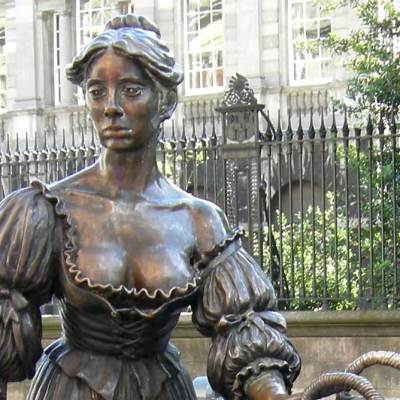With glass as with few other art forms, it is not just the final product that catches the eye, but the process of making it. There is something hypnotic about watching a skilled glassmaker moulding his fiery material at blisteringly high temperatures, blowing white-hot bubbles through a metal tube, or weaving long canes into intricate nets before they harden and snap.
The creators of Blown Away, released on Netflix this July, have set out to turn the aesthetic spectacle of glassmaking into a reality TV competition. The programme is certainly addictive television, employing the standard artifices of its genre: an emotive soundtrack, a hyperbolical voiceover, absurdly competitive participants, and the prospect of a single, ‘life-changing’ prize. But the unusual subject matter gives it a dimension of cultural interest not to be found in Love Island or The Great British Bake Off.
The premise is that an initial cohort of ten ‘exceptional artists’ are gathered in ‘North America’s biggest hot shop’, a purpose-built workshop in Hamilton, Ontario. Each episode, they are challenged to make a glass sculpture in response to a brief, with the aid of assistants whose role is sadly but inevitably underplayed. The sculptures are presented to the judges at the end of each round; one contestant is eliminated, on the grounds that he or she ‘did not blow [the judges] away’, and one is crowned ‘best in blow’. The process of elimination continues until the showdown between the two survivors in Episode 10.
Courtesy marblemedia/David Leyes

To ‘turn up the heat’, each task has to be completed within an arbitrary time limit of between four and eight hours. The contestants are allocated stations alongside each other, even sharing tools, in order to provide the audience with a lab scientist’s view of their interactions and to increase the probability of personality clashes. The programme revels in the technical terminology of glassmaking, from punties (metal rods for handling hot glass) to glory holes (furnaces used to reheat pieces between stages of making), in the dangers of the blow torch, and in the satisfying crash when a half-finished sculpture plummets to the ground at a critical moment.
The manufactured drama does not detract from the genuine skill of the contestants, all of whom are either professional glassmakers or fine arts graduates. The ‘resident evaluator’, Katherine Gray, is herself a respected glass artist. Contestants who allow their work to break, or whose works fail to meet the criteria set for a particular task (such as ‘creative bravery’ or ‘design concept’), are swiftly eliminated.
The least convincing episodes are those in which the task seems gimmicky or the criteria applied too subjectively. In Episode 7, for example, the nebulous theme is ‘duality’. The winning composition, a test tube and chalice symbolising science and religion, is arguably less successful as a work of art than the losing one (in which dumb-bells and bubbles represent weight and weightlessness), but the judges seem to be overly impressed by the former’s intellectual subject. The best tasks, in contrast, are those which bring out the attributes needed to be a successful glassmaker. These range from the technical skill required to make a wine carafe in reticello or a softly glowing light fixture, to the imagination involved in designing a robot for the ‘daily life of the future’ or transforming a hairbrush into a giant Pop art sculpture.
Blown Away contestant Janusz Poźniak. Courtesy marblemedia/David Leyes

The two finalists, Deborah Czeresko and Janusz Poźniak, are engagingly different. Deborah, a lesbian woman, presents herself as the minority candidate, fighting for recognition in a male-dominated field. Janusz wants to win for his young son (cue heart-warming photos). In a reversal of gender stereotypes, she comes across as outspoken and ruthlessly competitive, while he appears quiet, courteous and unsure of himself.
What makes Deborah’s final display memorable, pace the judges, is not its feminist message about ‘gender-bending the hot shop’, but its virtuosic transformation of raw sticks of glass into a gargantuan cooked breakfast, complete with sausages, eggs, and an enormous frying pan. Janusz counters with ‘Hope’, an ethereal collection of glowing, finely shaped sculptures on the theme of climate change.
By the end, it is almost impossible to say who should win without choosing criteria that favour one contestant or the other, their styles are so different. But then, the question of who wins, for all its hype, is almost a McGuffin; the bigger prize, for both finalists, is the publicity. The question remains whether the publicity generated by Blown Away will irradiate the glassmaking profession as a whole or will be confined, as with most television-generated fame, to its participants. Ultimately, though, the programme’s purpose is to entertain, not to evangelise; and there is always a glass screen between the artworks and their audience.
Blown Away, produced by marblemedia in association with Blue Ant Media and Netflix, is now streaming on Netflix.



